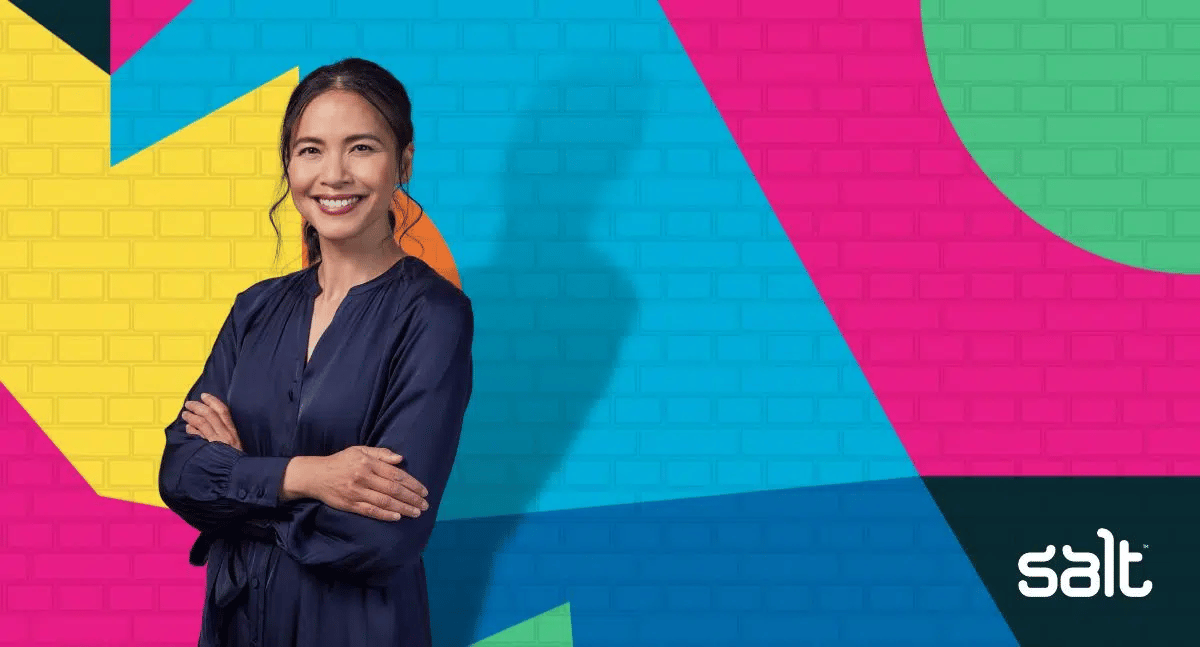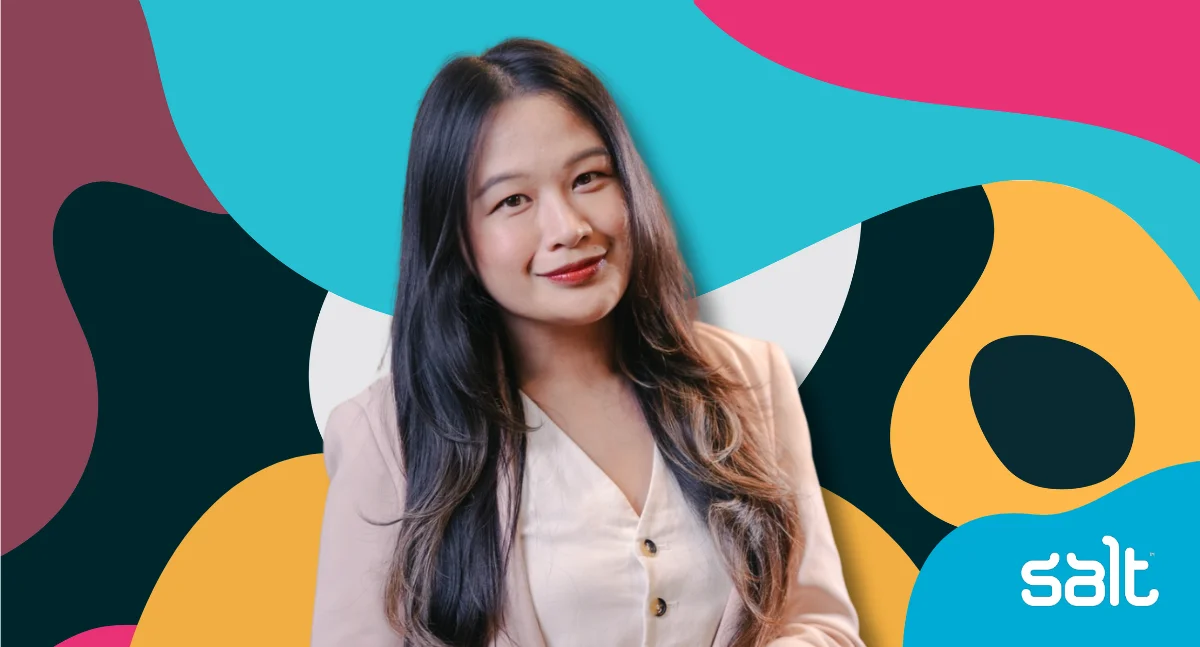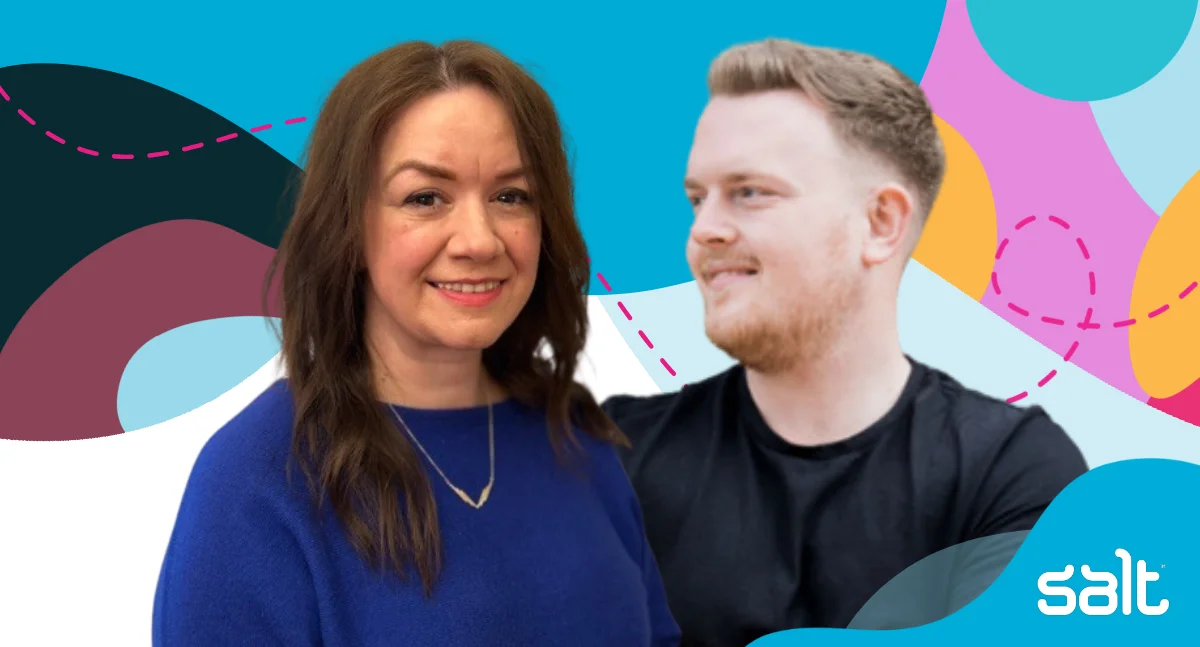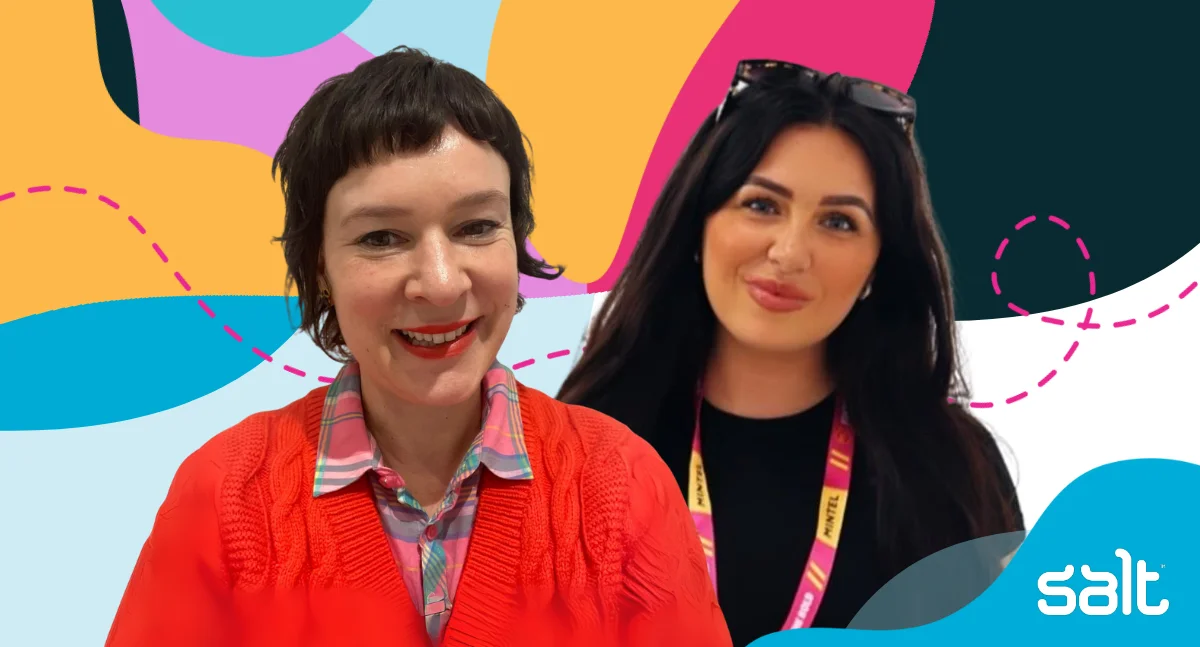
Introducing Samantha
I’m the Founder and Director of a social impact company called ADHD Girls. We have a dual mission to empower girls and women with ADHD to thrive in society, and to improve societal understanding of neurodiversity through an intersectional lens.
How would you describe what you do?
I run ADHD Girls by myself, employing freelancers. We create personal and professional development workshops for women with ADHD – and I’m in the process of looking into how to create a learning platform for neurodivergents.
Our projects are constantly evolving and are really based on the most urgent areas for women with ADHD. We look at what they need.
I regularly give neurodiversity training to workplaces. Because of this, I’ve been approached by corporate organizations to train human resources and diversity, equity, and inclusion, to bring some insight into the lived experiences of ADHD and neurodivergence. I’ve also trained educational and teaching staff in providing support for university students.
I am in the process of writing a book about neurodiversity and intersectionality, which will branch into a LinkedIn campaign and a newsletter as well.
What is neurodiversity?
Neurodiversity means all brains are different. It actually includes all of us.
But what you tend to see is that people use it as an example to describe learning differences and thinking differences (cognitive differences). ADHD, autism, dyspraxia, dyslexia, Tourette Syndrome, are all the kinds of brain differences that mean people who have them tend to struggle to fit into the societal systems (school, university and the workplace).
Neurodiversity, the term, was coined by Judy Singer, an Australian sociologist, in the 1990s. It means the infinite variation of human cognitive functioning within our species. We have over 86 billion brain cells, so it makes sense that while some of us might have genetic predispositions to certain brain differences, it doesn’t mean we all experience neurodivergence in the same way.
How we grow up and what we’re exposed to really shapes the way our brain works.
The term neurodiversity itself was coined because Judy Singer was looking into the autism movement. There was a lot of stigma associated with the medical model of disability, which means people emphasize on the individuals being impaired and needing to be fixed. By coining this new term, it almost encouraged a new movement, where people are looking at how we, as a society, can remove the barriers so that neurodivergents can thrive.
In your content you talk about the dangers of generalising neurodiversity, and not recognizing the effects of intersectionality. Why is that so important to understand?
I don’t think there are enough of us really talking about the overarching context of neurodiversity at the moment, because we’re so focused, especially when we’re late diagnosed, on really figuring out what that label means to us. Quite a few of the people you see writing on social media are saying, my ADHD means that I’m like this or my Autism means that I’m like this.
But what people really neglect is that even within the diversity, there is diversity itself.
I created a community, but I still felt like an outsider within this community because everyone was talking about their experiences growing up and in school, and they were not really the same as mine. In Asia, where I grew up, it was cool to be clever and it was cool to study hard. Even me, someone with ADHD who really struggled to focus on subjects I found boring and felt as if I was learning a different language on an alien planet, I somehow managed to cram it all in.
There’s a class divide within society itself, without even thinking about neurodiversity.
People who do not come from a certain class do not get the same chances as those who do in life. The doors are simply not open to them.
When I became a parent, a new mum, something really changed within me, I became more anxious. I couldn’t imagine how anyone could juggle family and career, because I didn’t have a support system here. I also didn’t know that I had ADHD and OCD too. That was a key transition in my life. A lot of new parents with neurodivergence don’t really get a lot of support, and they rough it out and hope to survive.
Intersectionality isn’t talked about enough. When workplaces say this is what we do for people with ADHD or for autistic individuals, they’re not really seeing the whole picture.
Part of the danger of not recognizing intersectionality is not seeing behind labels like high functioning and low functioning – could you tell us more about that?
A lot of ADHDers seeking diagnosis later in life think being associated with being high functioning means they were able to fly under the radar because they managed their situation. But it isn’t the case. The high functioning label means you’ve kept an appearance that looks as though you have achieved.
I’m a swan – swimming gracefully on the surface but underneath I’m paddling really, really rigorously.
Being high functioning can silence you from actually asking for help. It becomes a cycle of trying to keep up that appearance, and not asking for help because you don’t want to appear weak. That doesn’t help anybody.
So, it’s not a compliment to be associated with a high functioning label. It’s also very detrimental to be associated with a low functioning label.
These labels are the stories of success and failure in our lives, in our society. It’s not accidental. Our stories are written in the stars from the day we were born because all that plays into the upbringing that we have, and the doors that are open to us.
You recently led a conference focused on ADHD in the workplace and what best practices look like there. I’m wondering if you can share some key takeaways with us from that?
The conference that I led was called ADHD Best Practice at Work (watch key moments on my YouTube channel). We had three amazing keynote speakers: Dr Tony Lloyd, Professor Amanda Kirby and Atif Choudhury. We also had this mastermind session where we brought ADHDers and the world of work together, with people in hiring positions, managers, HR specialists, and ADHD coaches.
We came up with some key takeaways and ideas to improve recruitment, retention, sense of belonging, and intersectionality within the workplace.
One of the main barriers we heard about were feeling marginalized in the recruitment process itself, and self-esteem problems during the application and interview process.
- More understanding about neurodivergence would actually make people feel they belong at work. Everyone should feel secure, safe, accepted and understood, and connected to the team.
- Creating an anticipatory welcome for everyone, without singling out neurodivergence.
- Hiring inclusively and making the hiring process something accessible to everyone, for example by having more than one means of submitting the application.
At the end of the day, we are helping people to come to work and do their best job and to do their best work.
How can we encourage a more inclusive environment for those with ADHD and neurodivergence – so they feel comfortable disclosing it?
There are certain cultures where there’s a stigma or shame attached to ADHD so people might not want to talk about it. You also might not want to become the poster person for ADHD in the company, which is normally what happens if you try to help or advocate for yourself and other people.
We should think about what this person is comfortable with. There’re so many extra barriers when you think about more intersections. For someone who’s neurodivergent and women, that’s maybe one degree of barrier, then when you add class and culture, and trauma into it, that’s three degrees…
Whatever you do, just try and look at the person as an individual, and really ask them what they need.
A lot of the time, if you come from a culture where you don’t necessarily advocate for yourself, it might take some time for this to happen. We always recommend you try and keep a consistent channel of communication open, that doesn’t end within that one meeting of reasonable adjustments.
And the other thing I actually have a lot to talk about is to check your unspoken prejudices aren’t being brought into work.
In an environment that that does stigmatize ADHD, what are some practical things you can start doing to make that constant communication a reality?
I think it really begins with the management and trickles down to everyone else.
Proposing speakers with lived experience to come and talk within the organization and explain the challenges works.
Look at me, you know, I’m here, I’m talking to you, and I’m advocating for myself and other people. I’m a normal human being and when you see me, you don’t see it [my neurodivergence] because it’s invisible. To have someone on the stage to say I’m just like you, I’m capable of running an enterprise and being a mother is important, shows that neurodivergents can function perfectly well given the support and right environment.
And then having a leader acknowledging in a public space that there are outliers with these traits among us and that they’ll support employees lets the people in the audience know that they’re OK to be themselves and to disclose and talk about their challenges. Then we can find out strategies to really change the culture to be more inclusive to everyone.
It’s so important that it really starts from the top, but it can’t end on the top.
Because a lot of time there’s what you call the ‘frozen middles’. Especially in huge organizations. If you don’t have DEI strategies that trickle through middle managers and different teams, and you aren’t consistently asking for assessment and feedback, it’s all talk and no action.
Is there some career advice you wish you’d heard earlier on in your career that might have helped with your perspective about work?
One thing that I heard earlier on, and I think that is so true is: Don’t go for the money.
Although that sounds really counterproductive because we are meant to be working for pay but don’t just go for the money.
Especially after the pandemic, everyone is realizing life is more important than the money you’re going to earn from it. Have a career that you love.
I’ve worked in 16 sectors, and I have a tendency to really do things that I’m interested in. When that interest tapers off, I tend to lose that motivation. That’s when I need to take a break and then move into a something new and different, or I’ll get depressed.
I have a nervous system that needs me to do something that makes me feel alive. But at the same time, when I’m in the transition between things, I get really depressed because of the existential anxiety that I have.
And by the way, no one ever has certainty in life. You only have anxiety.
Even if you are in a full-time job, and it’s permanent, there’s no telling how long you would like to continue doing it. It’s not a bad thing for you to think about doing something that makes you happier because ultimately, we have one life, right? And we need to do things that work for us.
If someone is late diagnosed, is there any resources you’d send them to explore to help them understand ADHD?
Go to Instagram. That sounds simple, but I say it because when you Google ADHD or autism, the things that come up are so depressing. They can really send you on a spiral and you go to a dark corner and hyperventilate, but if you actually listen to lived experiences, which Instagram has in abundance, people are creating really fun reels that tells you about their ADHD and how they live with it.
At the same time, you need to take this with a pinch of salt. While there is validation in the things that you recognize, everyone’s different. On my YouTube channel, I talk to women of all representations, classes and cultures about what neurodiversity means to them.
I’d also recommend for a more positive framing of ADHD while not minimizing the challenges:
- ADHD 2.0: New Science and Essential Strategies for Thriving with Distraction–From Childhood Through Adulthood by Edward M. Hallowell, M.D., and John J. Ratey, M.D.
- Still Distracted After All These Years: Help and Support for Older Adults with ADHD by Kathleen Nadeau
- Attention, Girls!: A Guide to Learn All About Your AD/HD by Patricia O. Quinn, MD.
- Journeys Through Adulthood: Discover a New Sense of Identity and Meaning While Living With Attention Deficit Disorder by Sari Solden
I list all my recommended podcasts, books and all sorts of resources on my website. It’s all free.
The most important thing really is finding your community, whether that’s on Instagram, TikTok or LinkedIn. If you want a place where you can ask more ad hoc questions, then you can also join my WhatsApp community. It’s free and accessible through my Instagram link.
Final question – what did you want to be when you grew up?
I always wanted to be a creative. I thought I was really bad in the arts, but recently I thought about it and figured out that actually just because you’re bad at art in school doesn’t mean that you’re not creative.
I’ve come to my late thirties to understand that creative freedom of expression is really important to me. I think if you have some creativity or need to be creative, channel that. Create your own place in the world of work.


